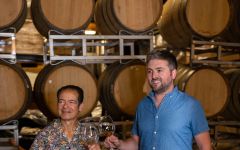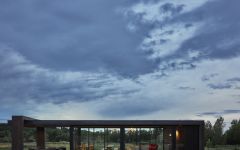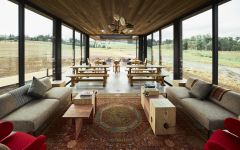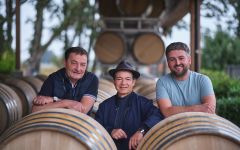Lingua Franca Bunker Hill Chardonnay 2021
-
Jeb
Dunnuck -
Robert
Parker -
Wine
Enthusiast -
Wine
Spectator -
James
Suckling



Product Details
Your Rating
Somm Note
Winemaker Notes
Pale yellow-green color with a predominantly mineral aroma of flint, hay, fresh herbs, lemon zest and yellow flowers. On the palate it is precise and taught, with an underlying lemon note and a silky finish.
Professional Ratings
-
Jeb Dunnuck
Taking things to the next level, the 2021 Chardonnay Bunker Hill offers heightened precision in its focused and brilliant aromas of flint, lifted citrus of Meyer lemon zest, pristine green apple, and basil. The palate is explosive, with loads of pristine, distilled fruit of bright green apple and lime, but it’s not austere. It has a soft stony, silky texture and a finish that lasts for days, with fantastic density and a note of citrus oil. The pure, transparent nature of this wine is next level. The best Chardonnay I have tasted from Lingua Franca to date, its energy is electric while managing ripe clarity to its fruit. It has a phenolic texture, but there’s nothing coarse about it. Buy this stunning white if you can get it and drink it over the next 10-15 years. This is for lovers of Burgundy.
-
Robert Parker's Wine Advocate
The 2021 Chardonnay Bunker Hill is singular and expressive. It has layered aromas of apple compote, lemon meringue, matchstick, toast and beeswax. The light-bodied palate pairs generous, savory flavors with tangy acidity, and its energy and flintiness create a shimmery feel despite its concentration. It's a gorgeous Chardonnay that will be long lived in the cellar. Rating: 94+
-
Wine Enthusiast
I found my Chardonnay thrill on Bunker Hill. This wine’s minerality is stupefying, with aromas that make you feel like you are grinding arrowheads in a granite mortar and pestle. Aromas of pine needles, lemon and the saline qualities of salt and vinegar potato chips. Melon and peach flavors with electric acidity are mere bonuses.
-
Wine Spectator
Steely and sleek, yet buoyed by a rich midpalate of Meyer lemon and apricot flavors, laced with stony minerality and spicy lee elements that speed along the snappy finish. Drink now through 2026. 634 cases made.
-
James Suckling
Apples, cedar and baking spices on the nose follow through to a medium body with fresh acidity. Good volume with texture. Balanced with a creamy finish.
Other Vintages
2022-
Robert
Parker
-
Robert
Parker -
Wine
Spectator -
Wine &
Spirits -
Wine
Enthusiast
-
Wine
Spectator -
Wine
Enthusiast
-
Wine
Spectator

One of the most popular and versatile white wine grapes, Chardonnay offers a wide range of flavors and styles depending on where it is grown and how it is made. While it tends to flourish in most environments, Chardonnay from its Burgundian homeland produces some of the most remarkable and longest lived examples. California produces both oaky, buttery styles and leaner, European-inspired wines. Somm Secret—The Burgundian subregion of Chablis, while typically using older oak barrels, produces a bright style similar to the unoaked style. Anyone who doesn't like oaky Chardonnay would likely enjoy Chablis.

One of Pinot Noir's most successful New World outposts, the Willamette Valley is the largest and most important AVA in Oregon. With a continental climate moderated by the influence of the Pacific Ocean, it is perfect for cool-climate viticulture and the production of elegant wines.
Mountain ranges bordering three sides of the valley, particularly the Chehalem Mountains, provide the option for higher-elevation vineyard sites.
The valley's three prominent soil types (volcanic, sedimentary and silty, loess) make it unique and create significant differences in wine styles among its vineyards and sub-AVAs. The iron-rich, basalt-based, Jory volcanic soils found commonly in the Dundee Hills are rich in clay and hold water well; the chalky, sedimentary soils of Ribbon Ridge, Yamhill-Carlton and McMinnville encourage complex root systems as vines struggle to search for water and minerals. In the most southern stretch of the Willamette, the Eola-Amity Hills sub-AVA soils are mixed, shallow and well-drained. The Hills' close proximity to the Van Duzer Corridor (which became its own appellation as of 2019) also creates grapes with great concentration and firm acidity, leading to wines that perfectly express both power and grace.
Though Pinot noir enjoys the limelight here, Pinot Gris, Pinot Blanc and Chardonnay also thrive in the Willamette. Increasing curiosity has risen recently in the potential of others like Grüner Veltliner, Chenin Blanc and Gamay.








